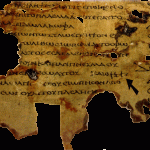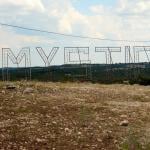Jesus and the Forces of Death: The Gospels’ Portrayal of Ritual Impurity within First-Century Judaism
The new book, Jesus and the Forces of Death, is a quick and compelling read about how we should interpret Jesus’ attitude toward ritual impurity when we read the Gospels.
What was Jesus opposing in his ministry and miracles? There is a long and sad history of assuming and arguing he was rejecting Jewish religion, Judaism, Jewish ritual, or religion itself. This is clearly wrong, and much Jesus scholarship of the last forty years has worked very hard to correct this unsubstantiated view. But this still leaves the question of what Jesus was up to when he engaged with miraculous activity that transformed someone’s ritual impurity into purity.
Matthew Thiessen has made a strong case for viewing this activity of Jesus, according to the Evangelists, not as rejection of Judaism, but as victory over death. How does he get there? From a theoretical perspective, he draws on the work of Mary Douglas and Jacob Migrom. Milgrom especially has argued that the common sources of impurity in Jewish Scripture have one thing in common: associations with death, thus “in Jewish thinking ritual impurity represents the forces of death” (Thiessen summarizing Milgrom, pg. 16).
So, when Jesus healed lepers or awakened people from “sleep,” he was not throwing out Jewish purity concerns. On the contrary, Jesus was restoring them to purity. He does this not by some ritual act as a priest, but as one “divinely equipped to deal with the actual sources of impurity” (20).
In the chapters that follow after the introduction, Thiessen tackles various situations in the Gospels where Jesus engages with issues of ritual impurity/purity: lepra (often translated “leprosy”; ch 3), the hemorrhaging woman and the dead womb (ch 4), the dead (ch 5), demonic impurity (ch 6), and Jesus healing on the Sabbath (ch 7). I am not going to go into detail with each of these chapters, but suffice it to say Thiessen offers clear and thoroughly researched arguments that Jesus is not portrayed as flippant or antagonistic towards Jewish impurity concerns. On the contrary, he desired to remove the sources of the impurity and restore them to purity. This establishes a wider point for Thiessen: “The Jesus of the Gospels is a Jesus who seeks to observe the Jewish Law and who provides legal defenses of his actions on the basis of the Jewish Law” (173). That is the say, Jesus was not a renegade who cut himself off from the Judaism of his heritage. On the contrary, “Israel’s God has unleashed a force of holiness in the world that goes on the offense against impurity—Jesus is the holy one of God” (Thiessen summarizing the perspective of the Synoptic Evangelists; pg 180).
In the conclusion, Thiessen addresses the term “supersession/ism.” This is a much abused and confusing term, so I appreciated his clarification and caution to those who insist on it: “Early Christ followers believed that in Messiah Jesus, the old cosmos was being superseded by a new creation in which Satan and his demons, death, and sin—that is, pneumatic, ritual and moral impurity—would no longer exist” (183).
Overall, I found this a very refreshing read and I highly recommend it to all students, and scholars will find it insightful as well. This is one of those books where I am shocked no one has written this before, but I am glad Thiessen has filled that need.
Nevertheless, I did think there were some weak spots here and there. First, I actually think Milgrom is right, but it is all still just a theory and Thiessen’s coverage of that theoretical foundation is short (see pp. 14-18). Given all the eggs he’s putting in that one basket, I would have wanted more—how exactly do you link Jewish ritual impurity to death? Second, I think Thiessen chose his chapters and topics really well, almost all of them revolving around death in some form, but then I was surprised not to see more on Jesus’ own death. Only a couple of pages in his chapter on “Death” seem to engage with Jesus’s death (see 110-111), and it definitely left me feeling like this was a missed opportunity. I would have even expected a whole chapter on Jesus’ death and resurrection. Finally, if you are like me, you might be wondering what Thiessen has to say about Mark 7:19 (“Jesus declared all food clean”). He does not handle this at all in the book proper, but includes his reading of this in an appendix. I think it should have gone into the early part of the book to help the reader “put it aside” as a concern, as it were. Furthermore, I didn’t find his interpretation convincing, but that is not a deal-breaker for his overall concern in the book.
Well, at the end of it all, I am very glad I read this book. When I was working on my dissertation on Paul, I ran into the very same issues where a large history of scholarship took Paul’s “spiritualization” of cult and sacrifice as a rejection of Jewish ritualism and superstition. No way! I too found Milgrom’s approach a more satisfying reading of Paul, whereby the Apostle saw the work of Christ as overcoming death and bringing life, not rejecting Judaism.
Thiessen and Baker Academic have produced a splendid contribution to scholarship, one that I will certainly commend to students as we engage with discussions about what Jesus was up to in his earthly ministry according to the Evangelists.













